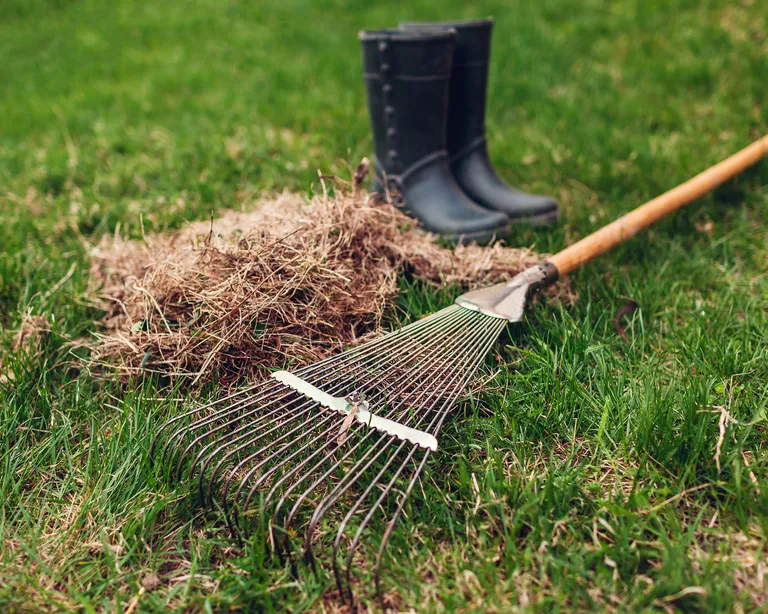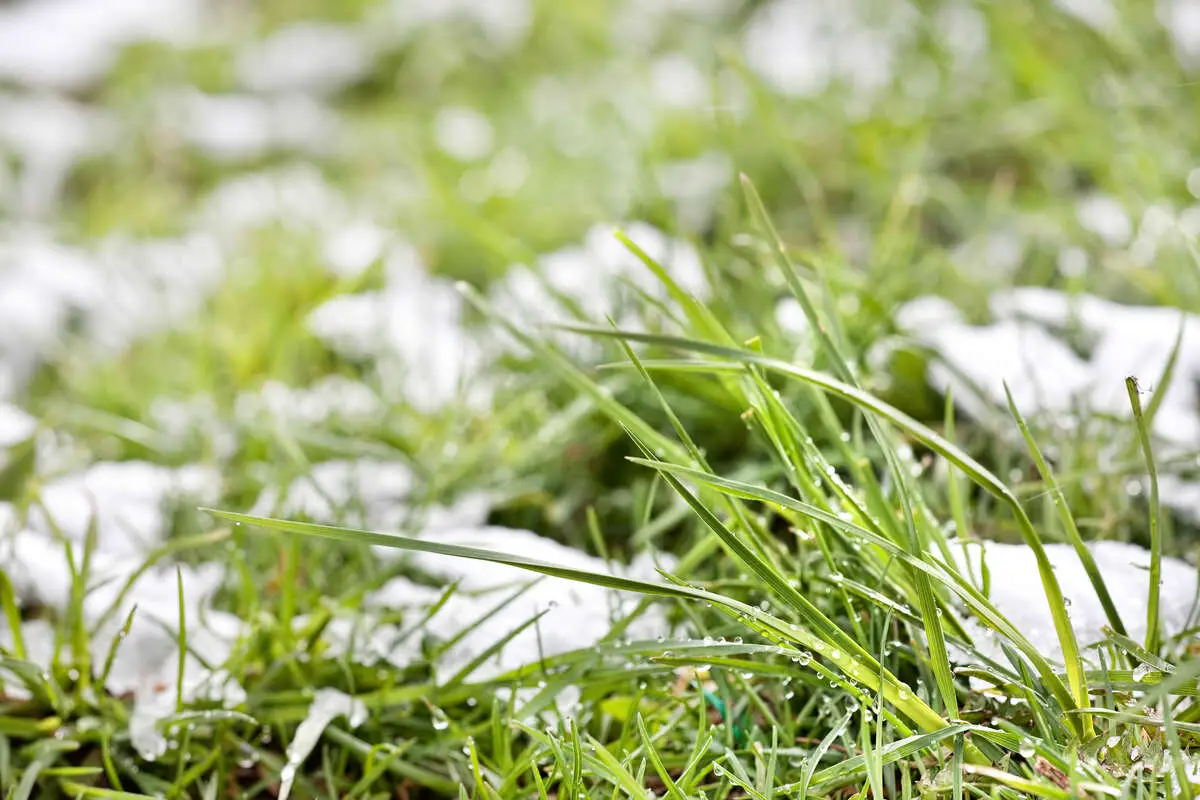What Month Should I Stop Cutting My Grass Before Winter?
Last Updated on September 29, 2025 by Duncan
As the weather cools, plants and grass reduce their growth cycles. In cooler temperatures, the sort of grass you have and where you reside will influence its development. The climate or region in which you live can also greatly influence when to stop mowing
Mowing will usually take a back seat during the colder months, as some grass goes dormant and others slow down development.
Many lawn grasses grow based on soil temperature rather than air temperature. Due to this, if the temperature remains warmer longer then the plants continue to grow and potentially could need to be maintained.
Typically, the last cut or mow of the season occurs before temperatures drop and it becomes too cold to mow.
What month should I stop cutting my grass before winter?
This will depend on a number of factors such as:
Whether the grass is warm or cold season
There are two types of grasses: cool season and warm season. Your geographic location will determine whether you cultivate cool-season or warm-season turf cultivars. Warm-season grass flourishes in warm to hot areas and typically stops growing when temperatures drop.
Lack of rainfall can also cause turfgrass species to go dormant, as can cold freezing weather.
Warm season turf grasses typically go dormant over the winter.
Cool-season grass may continue to grow at colder temperatures. You may need to maintain your cool season turfgrass for a longer period of time because they continue to grow during the winter months and remain green. This will, of course, depend on weather conditions.
Your location
Geographical location is an important consideration when preparing for the season’s final cut. What your climate and region is like will dictate what turfgrass species you grow, and different warm-season turfgrasses have different periods when they go dormant.
If you live in a warmer climate, you may not have as much time to cut the grass as you do in colder regions. In southern regions or areas with mild winters, warm-season [grass] varieties like Bermuda or St. Augustine may continue growing longer into the fall and even into winter.
As long as the grass grows, mowing must continue. You may not have to stop mowing completely, but you should reduce the frequency as temperatures cool and growth slows.
Plants grow slower or stop completely in colder climates. In cooler northern regions or areas with harsh winters, grass growth stops earlier in the fall. Cool-season grasses like Fescue or Kentucky Bluegrass, common in these regions, also slow down as temperatures drop.
You should stop mowing when the grass stops growing, which normally happens after the first frost.
Before you make the last mow you should know this
When preparing for the season’s final cut, the grass type on your lawn will determine the height at which you trim the grass. Mowing below the recommended height can scalp the grass, causing severe damage and stress.
The final cut must strike a balance between cutting it too short and leaving it too tall. It is not wise to let the grass grow taller than the recommended height because it can shade itself and become thin and brown underneath.
The easiest way to ensure that you cut the grass and leave it at the appropriate height is to identify the grass species and cut it at the specified mowing height.
How tall should you cut warm season grass?
You should cut warm-season turfgrass, such as St. Augustine, between 2.5″ and 4″. At the same time cut warm-season varieties such as Bermuda, St. Augustine, and Zoysia half an inch higher than usual for the final cut.
You should note that leaving the grass slightly taller helps protect the base of the blades and stolons from frost, creating a barrier that shields the growing areas from cold damage.
You should avoid cutting the grass too short, since this would expose the grass to the cold and frost, which as you can tell ends up harming it.
How tall should you cut cold season grass?
You should cut cool-season grasses such as Fescue or Kentucky Bluegrass approximately half an inch shorter than usual for the last mow. This helps the grass adapt to cooler temperatures and prevents matting, which can lead to snow mold.
How do you know it’s time to mow for the last time?
There are several signs that indicate it’s time for the final mow before winter. These signs include:
The soil temperature.
Checking the soil temperature is a practical way to determine when the last cut is nearing. For cool-season grasses, growth generally ceases when soil temperatures drop below 40°F (4°C).
Cooler temperatures.
The weather is a reliable indicator that the season is changing. Grass growth typically slows significantly as temperatures drop. When temperatures drop, cool-season grasses experience this phenomenon.
If you notice that your grass is no longer growing rapidly, it may be time for a final mow.
Falling leaves.
As the weather cools, leaves begin to fall. A visual clue is when there are a lot of leaves on your lawn. It often signals that your lawn is entering its dormancy period and it’s time to cut your lawn for the last time.
First frost
You should make the last cut before the first frost arrives. Weather patterns are changing, so you may not be able to rely on your schedule, but keep an eye on frost forecasts.
You should mow at least one week before the first hard frost hits your area. This helps ensure that the grass is at an optimal height for winter resilience.
Why should you avoid mowing your lawn during winter?
When the weather gets cold, most plants pause or stop growing until the temperature rises again. If it’s freezing outside, you’d probably rather be warm inside than start the lawn mower.
The lawn also prefers to be left alone. Mowing when temperatures drop below 40°F (4°C) can severely stress the grass.
At these temperatures, grass growth slows significantly, and its ability to recover from mowing is compromised. This can make grass more sensitive to diseases.
Grass blades become more fragile and brittle in the cold. Mowing under these conditions can result in torn or ripped blades, leaving an unsightly lawn and increasing vulnerability to pathogens.
Mowing while the lawn is cold or damp can be harmful to the grass. Once the temps drop, let the lawn alone. Mowing on frozen or excessively wet soil can cause compaction, which restricts air, water, and nutrient movement to the roots.
This compaction stresses the grass and hinders its growth potential when it resumes in the spring. Mowing under wet circumstances, whether from rain, dew, or frost, can result in uneven cuts that weaken the turf and make it more susceptible to disease.
As a general rule, mow the lawn only when it is dry. Temperature is also a crucial consideration before using the mower. To be on the safe side, wait until temperatures are at least 40 degrees Fahrenheit before mowing.


